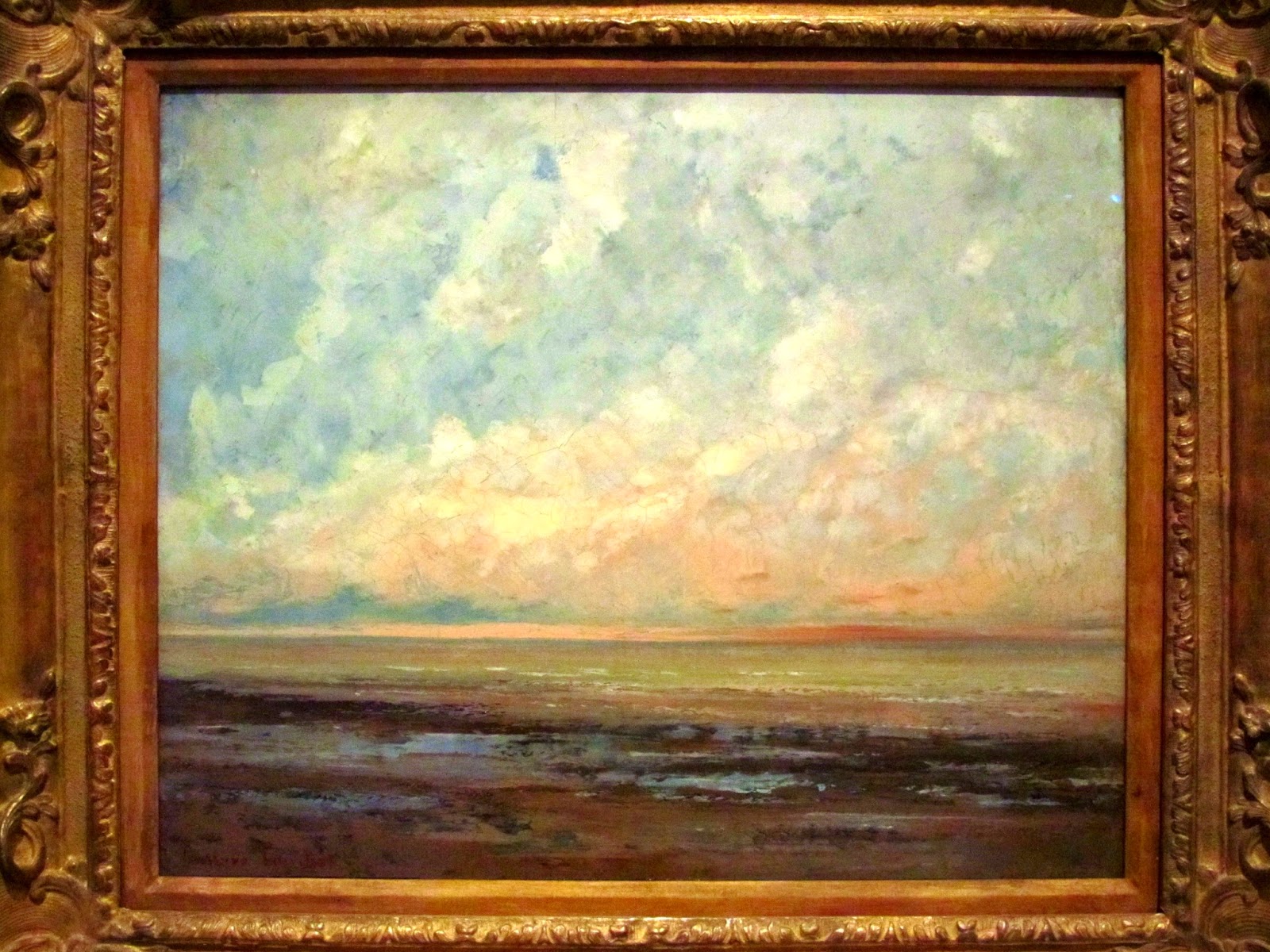There were rooms and rooms of everyone from Corot to Kadinsky. There was a special room just for the pastels of Edgar Degas. I think the only disappointing thing about this museum was the Cafe where they only had boxed salads and sandwiches. However, this was more than offset by the price of entry which was only $18 for the both of us as compared to the LA Museum which would have been $25 each.
There were numerous paintings of artists like Edouard Manet, Gustave Courbet, and Jean-Baptiste Camille Corot who was considered a forebear of those works by Monet, Renoir, Sisley, and Pissarro. These artists would not be considered true impressionists since they did not complete their paintings plein air but made studies and then completed the final painting in the studio such as Corot's "Thatched Cottage In Normandy".
Of the Early Impressionists, Camille Pissarro was considered the earliest and has been called the Father of Impressionism, since he was the first to complete the painting en plein air. He was also the only Impressionist to be in all eight impressionist exhibitions and encouraged and often supported the younger artists. In his painting "Landscape With A Flock Of Sheep", you can clearly see two sheep in the front of the sheep mass, but if you look closely, the mass of sheep is only color, no sheep at all. There was no varnish put on this painting so that the fluttering brushstrokes and luminosity of pigment would allow the subtleties of tones to create the scene.

There were numerous examples of Van Gogh's paintings, including some that were earlier, darker works completed while living in the Netherlands with his parents, which he had to do when he was age 30 and had run out of money. This painting is just titled "Still Life".

When he returned to France, Van Gogh painted a portrait of his mother from a black and white photograph creating harmony using a monochromatic green. In spite of the unusual portrait color, her character and good nature show through.
There was also Van Gogh's painting of a "Portrait Of A Peasant" in which you see the pulsating prismatic colors for which he is known at the end of his life. This color and the brushstrokes give expression and intensity to the character.
And a close up of the eyes.
By the very end of his life, and after his suicide attempt, Van Gogh was living in the asylum although he continued to paint. This painting "The Mulberry Tree" was purchased by Camille Pissarro when Van Gogh died 8 months later.
As we continued along through the rooms, we saw a number of paintings by the Nabis (Hebrew for prophet) which was a group of painters including Maurice Denis and Pierre Bonnard but started by Paul Serusier. His work "Still Life With Apples And Violets" recalls the pyramidal structure of Cezanne's paintings of the time, and the warm and cold tones laid down in flat tints are similar to the works of Emile Bernard and Paul Gauguin.
Although there were paintings by Renoir, Monet, Signac, Vuillard, and others.... one of the paintings that I liked the most was by Gustave Courbet entitled "Marine". Courbet was very famous in the mid 1800's for his realistic paintings but he then turned to landscape where he tried to match the physical quality of
the paint to the physical quality of the scene. Here in this painting, he has dragged and scraped the paint in various ways to create the sky, sea, and sand.
A close up of the sand.









No comments:
Post a Comment